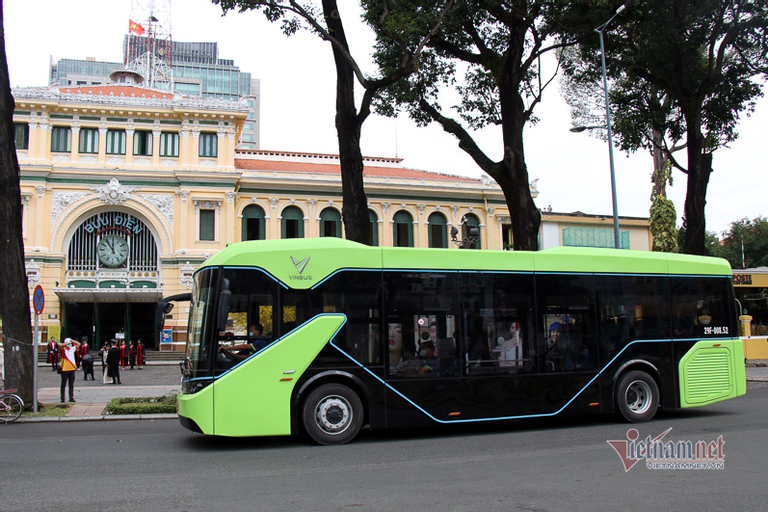Electric buses are set to roll out as early as 2025, representing a significant shift toward sustainable transportation.

Vietnam’s transportation sector emits high levels of greenhouse gases compared to developed nations, largely due to outdated vehicles, aging infrastructure, and inefficient transport management.
Road transport, with many empty trips and limited public transit options, adds to the challenge, especially in cities where private vehicles dominate.
The Ministry’s plan aims to reduce emissions by 5.9% below business-as-usual levels by 2030, avoiding an estimated 45.62 million tons of CO2 emissions over the period. To achieve this, the Ministry has outlined ten key actions.
One focus is fuel efficiency: by 2030, all motorbikes must meet a fuel efficiency standard of 2.3 liters per 100 km. For new passenger cars, fuel standards are set based on engine size, with smaller engines (under 1,400 cc) capped at 4.7 liters per 100 km and larger engines (above 2,000 cc) at 6.4 liters per 100 km. By 2030, all new vehicles are expected to comply with these efficiency standards, with phased adoption beginning in 2027.
To encourage a shift from private vehicles to public transport, the Ministry targets public transit coverage of 45-50% in Hanoi, 25% in Ho Chi Minh City, and 5% in other cities by 2030.
Key projects include one high-quality bus rapid transit (BRT) line in Hanoi, two in Ho Chi Minh City, and one in Da Nang.
In addition to promoting electric vehicles, the Ministry is advocating for a transition to environmentally friendly modes such as rail, inland waterways, and coastal shipping.
Investments in infrastructure and incentives for biofuels, including 100% use of E5 ethanol fuel in road vehicles by 2030, are also part of the plan.
With transportation ranking as Vietnam’s third-largest source of greenhouse gas emissions after energy and agriculture - accounting for 18.38% of national emissions - the shift to greener alternatives is seen as critical.
Annual emissions are projected to increase by 6-7%, reaching nearly 90 million tons of CO2 by 2030, with road transport responsible for about 80% of these emissions, water transport 10%, aviation 6%, and rail a minimal amount.
Calculations reveal that inland waterways have the lowest emissions per ton-mile, followed by rail, aviation, and road, which has the highest emissions.
N. Huyen